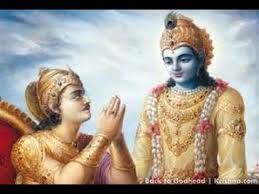
Sri
Gauranga
Ashram
Home
Significance of Margasheersh month
Om Vishnupad 108 Tridandi Swami Sri Srimat Bhakti Sravan Tirtha Goswami Maharaj ki Jai!!
 The month of Margasheersh or Margazhi as it is known in the south, Agrahayan or Aghan in various parts of the country, is considered a very significant time to stabilise oneself in terms of spiritual practices. (In 2022 the dates are Nov.9 -Dec 8 for Purnimanta followers and 24 Nov-23 Dec for Amanta followers).
The month of Margasheersh or Margazhi as it is known in the south, Agrahayan or Aghan in various parts of the country, is considered a very significant time to stabilise oneself in terms of spiritual practices. (In 2022 the dates are Nov.9 -Dec 8 for Purnimanta followers and 24 Nov-23 Dec for Amanta followers).
Lord Sri Krishna himself has heralded the significance of the Margasheersh month in one of the verses of the Bhagavad Gita. ----
Bruhatsama thatha samnam Gayatri Chandasamaham Masanam Margashoham Ruthunam Kusumakarna
Meaning:- Lord Krishna says “In the Sama Veda, I am the Bruhathsama, among the verse forms, I am the Gayatri, among the months, I am Margasheersh and among the seasons, I am the spring season".
This month is an ideal one to engage in meditation and worship of Lord Vishnu, Lord Shiva or your Ishtadev. Margazhi, which precedes the Uttarayana is ushah-kaala (the short period just before dawn) for devas for whom a human year constitutes one day. The period just before dawn in this month is therefore very sacred and it is common for all to visit the temples and go around the streets singing Tiruppavai or kirtan during this time. 
During this month, Manabasa Lakshmi puja is performed on Thursdays in Odisha. During the Margasheersh month, people undertake early morning group kirtan chanting around one’s neighbourhood and visit the temples of Lord Vishnu. In Punjab, Haryana and Delhi this is the time when Sikhs take out “Prabhat pheri” chanting gurbani.
In the towns of Srirangam and Chidambaram in Tamil Nadu, each day of the month is a grand festival for both Lord Vishnu and Lord Shiva respectively.
The Bhagavad Gita was given to Arjuna during Margashirsha month on the day of Shukla Paksha Ekadasi (eleventh day of the bright half of the lunar month). Therefore, this day is celebrated as the Gita Jayanti. Sri Dattatreya Jayanti is also observed on Margasheersh purnima.
In Vrindavan, Bihari Panchami, the appearance of Thakur Sri Banke Bihari Lal is observed with much pomp and celebration at Nidhi Van and Bihariji temple.
 In the town of Jejuri, near Pune in Maharashtra, the grand festival of Lord Mallhari also known as Khandoba (an incarnation of Lord Shiva), is celebrated over six days starting on the shashti, called Champa Shashti. The entire hillside where the temple is located and all the people are smeared in turmeric powder as an auspicious ritual.
In the town of Jejuri, near Pune in Maharashtra, the grand festival of Lord Mallhari also known as Khandoba (an incarnation of Lord Shiva), is celebrated over six days starting on the shashti, called Champa Shashti. The entire hillside where the temple is located and all the people are smeared in turmeric powder as an auspicious ritual.
Lord Gauranga and Sri Nityananda Prabhu entered the holy dham of Puri (after Mahaprabhu’s sanyas), on the shukla shashti of Agrahayan maas. The day known as Gaura Shashti is celebrated in many Gaudiya Maths in and around Puri.
The Shukla Paksha Ekadasi of Margasheersh month is observed as Mokshda Ekadasi or Vaikunta Ekadasi, one of the most significant ekadasis in the year. On this day, people observe a fast from grains and legumes and concentrate on chanting the holy name as much as possible. All Vishnu temples in South India erect a decorated gateway which symbolizes the gateway to Vaikuntha, where the faithful walk through.
Mitra Saptami falls on the Shukla Paksha Saptami (the seventh day of the bright half of lunar month) in the month of Margasheersh. This is a day dedicated to worshipping the Sun God (Mitra or Surya Bhagvan). Worshipping Sun God on this day is said to provide the devotees with good health and prosperity.
These observances and practices even if contemplated upon, have the power to energize and revitalize our minds and impart a sense of wellbeing and positive energy.
The best, easiest and most beneficial mantra to chant during this month is:
Hare Krishna Hare Krishna Krishna Krishna Hare Hare
Hare Rama Hare Rama Rama Rama Hare Hare
Jai Guru!
Jai Jai Sri Radhey!!